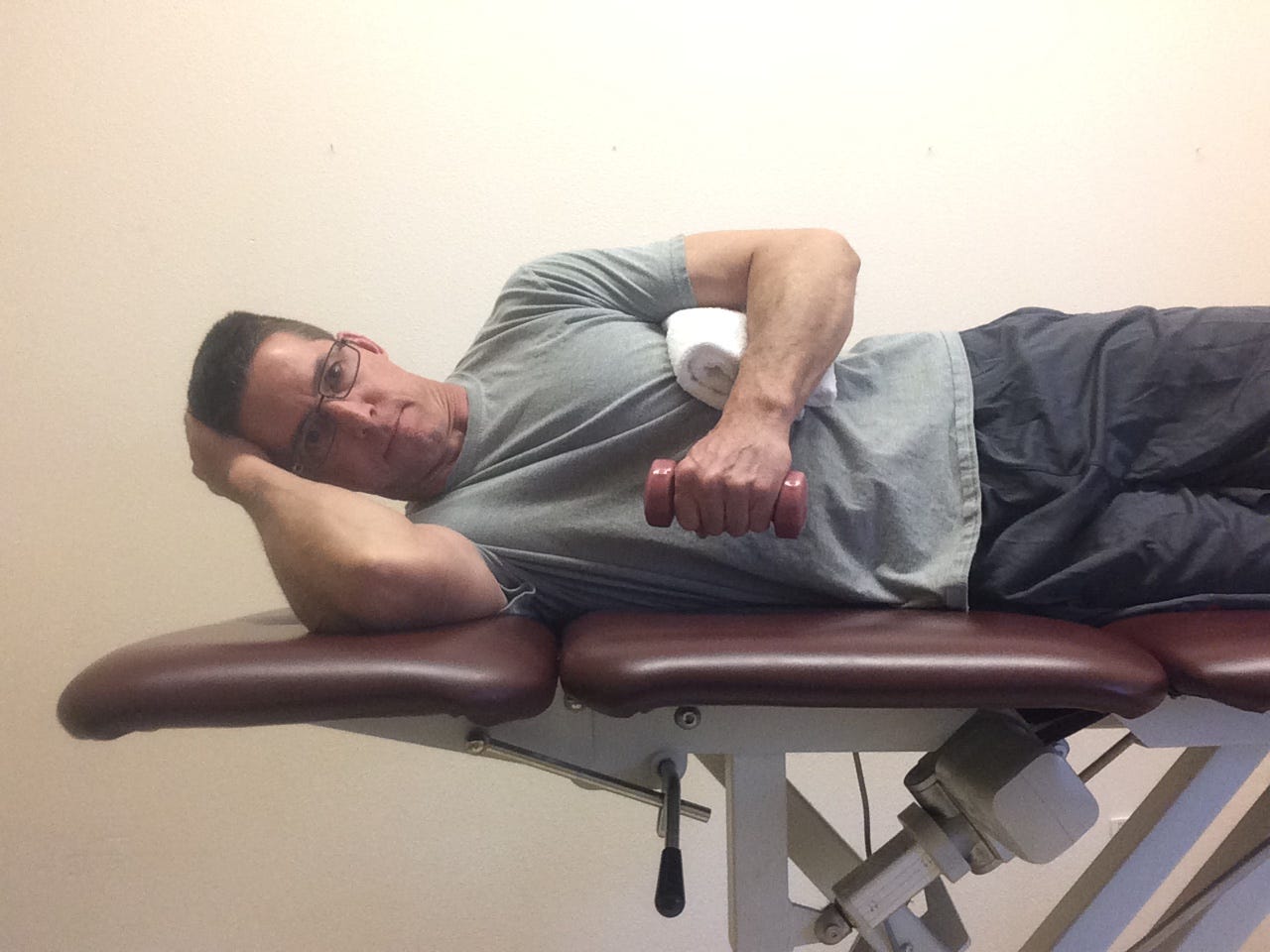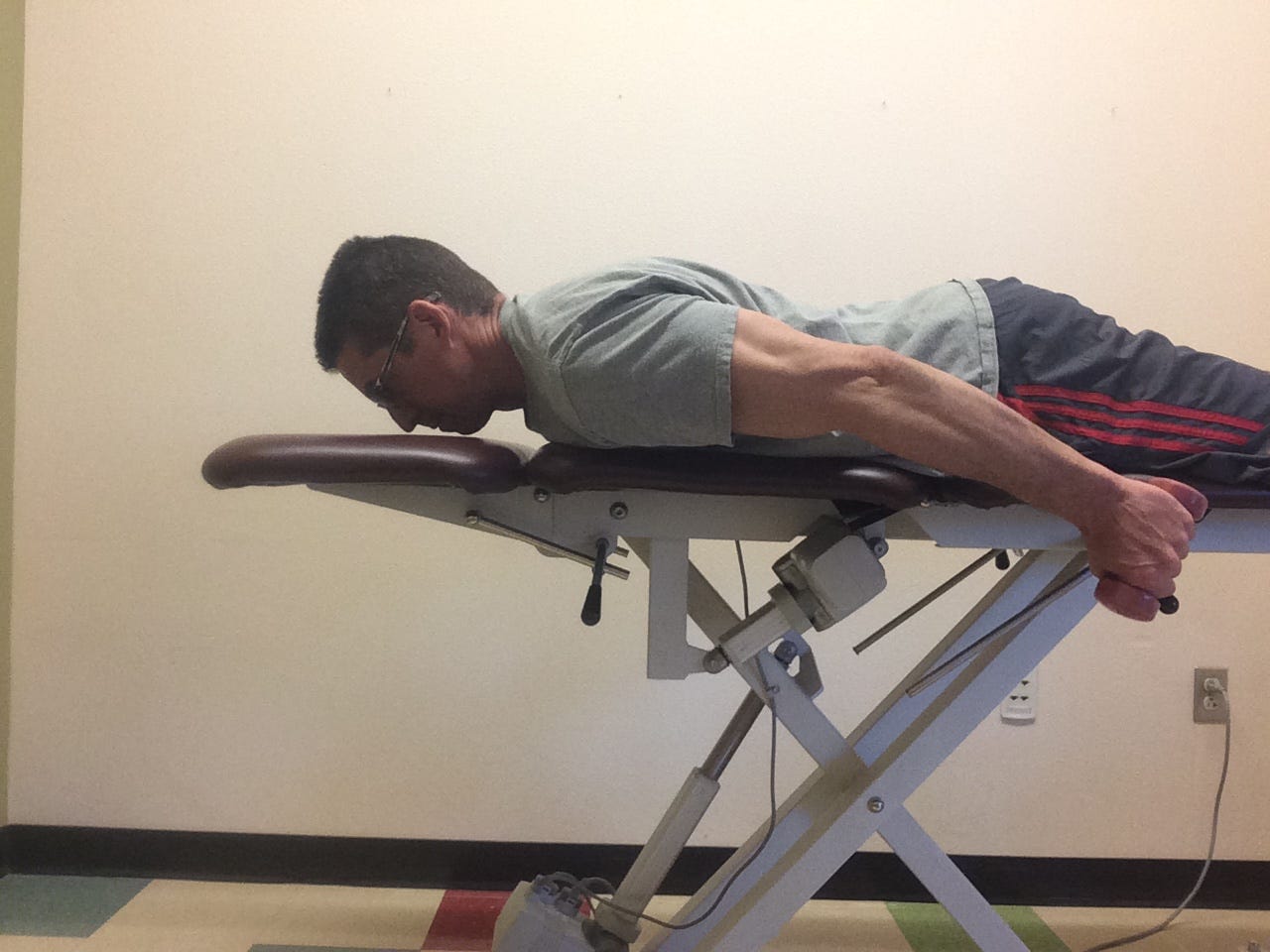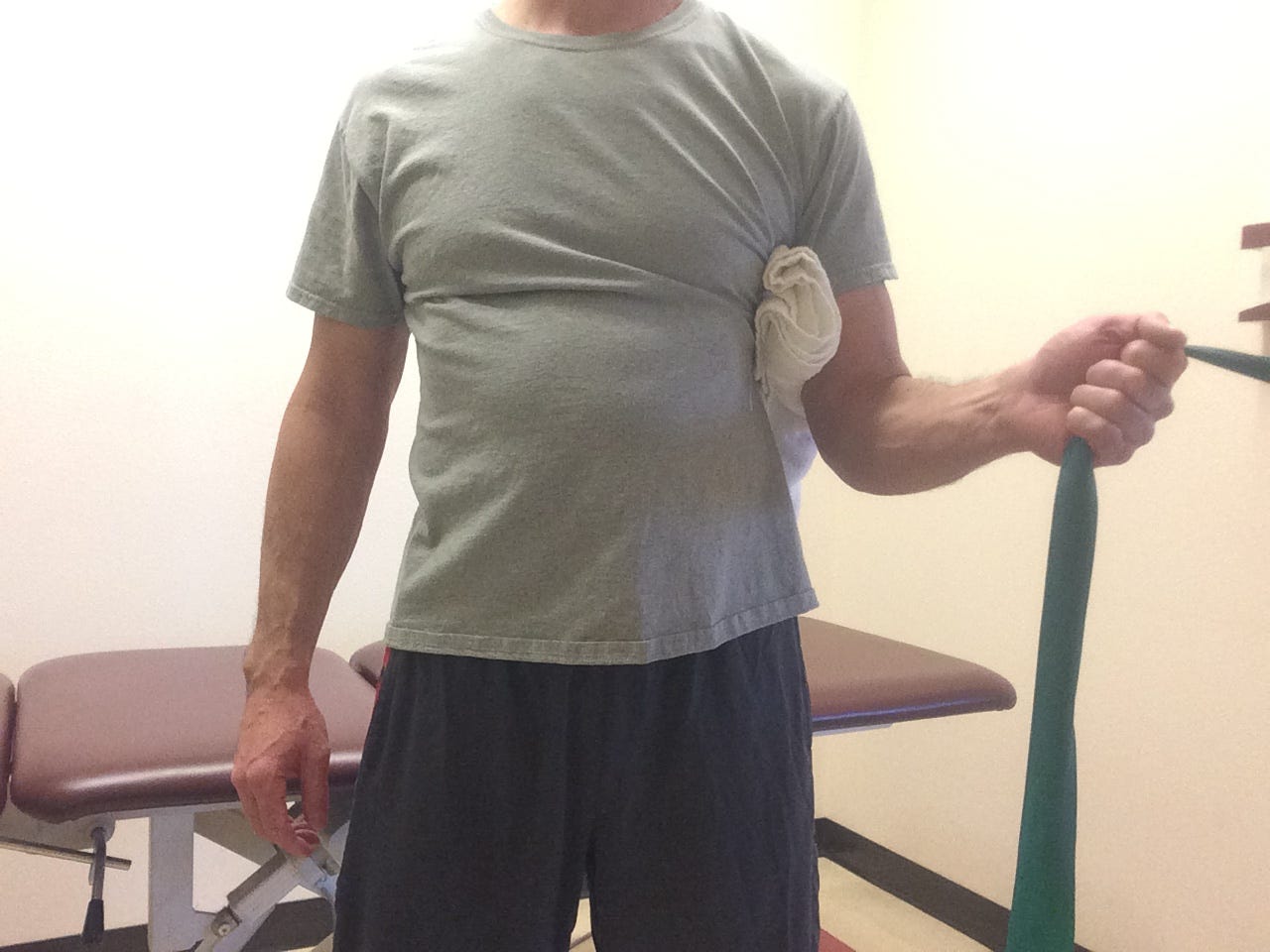Consult your doctor and/or therapist before attempting any of the following exercises.
This posting is the suggested exercises for the “Why your shoulder hurts…Part 1: The Explanation” article.
In the previous article we discussed why it’s important to restore full range of motion.
Below is a link to my personal experience fixing my rotator cuff issues,
Lying on your back gives the benefit of gravity assistance and improved quality of flexion stretch. Once full flexion is restored, mechanics of lifting the arm against gravity will improve. Pending shoulder surgery, or after surgery, ROM must be restored. There will likely be restrictions put into place by the surgeon. These are extremely important for the safety of the tissue repair, and should be addressed by a physical therapist.
Preventing joint contracture or restriction, and following surgical directions, is the most important focus following surgery. The body does not understand the necessity for surgery, which is just perceived as trauma. The body will react accordingly to the trauma, and initiate the inflammatory response. This includes increased swelling and scar tissue formation, which are used to help heal the injury. That is why we need to stretch to restore ROM.
PART 1: Rotator cuff/Anchor system strengthening
The following exercises increase strength of the rotator cuff muscles, which will improve quality of shoulder rotation, and decrease pain.
This first exercise might help to raise your arm overhead if you have pain with that motion. The rubber band tension pulls the ball down in the socket, decreasing overhead pain. Sometimes I have people start in the down position first, and slowly raise up to the limit of pain.
How many and how much?
The typical number of repetitions for strengthening is 8-12. For rehab I like to stretch it out to 15-20 since people are usually in pain, and as they strain too hard, quality of movement decreases.
This means you are choosing a resistance that you can only complete 15-20 times.
First week, 1 set of each exercise, 15-20 times, each day. Second week, 2 sets, and 3 sets by the third week.
You’ve just worked the anchor system, or counter weights. Now it’s time to strengthen the deltoid for overhead motion.
Part 2: Overhead or Deltoid strengthening
This is one of my favorite deltoid exercises because it bends the elbow. Bending the elbow decreases poor leverage of the shoulder, and mimics more functional reaching activities. We don’t walk around like robots with outstretched arms, yet we are tested and exercised in these positions.
Sometimes this is referred to as the lawn chair progression. You find a chair or reclining bench, and pick the lowest angle you can complete the exercise without pain and/or deviations in form. As you get stronger, start to increase the angle until you are able to stand upright and perform the same movement. Same sets and repetitions as listed above.
This ball on the wall exercise allows the arm to get some help from resting on the ball. You start low and then take small “steps” with your hands until the ball is overhead. Add a wrist weight if you need more challenge.
There is much more to rehab of the shoulder than just these exercises. If you are not progressing with these exercises, you need to return to your therapist and/or doctor for more consults or imaging. There are many more techniques, like joint mobilizations and taping, that might help your progress, or make the difference in success.























